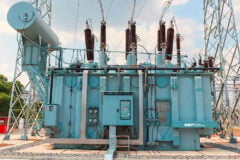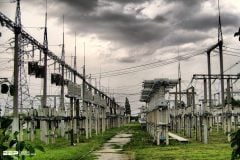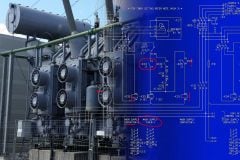How power utilities do it
These days, the dependability of the infrastructure used to distribute energy to customers is a key metric for evaluating electrical utility companies. A single unscheduled interruption may be disastrous for a utility company’s finances and reputation. Most customers lack the time and comprehension to appreciate the intricacies involved in ensuring constant power.
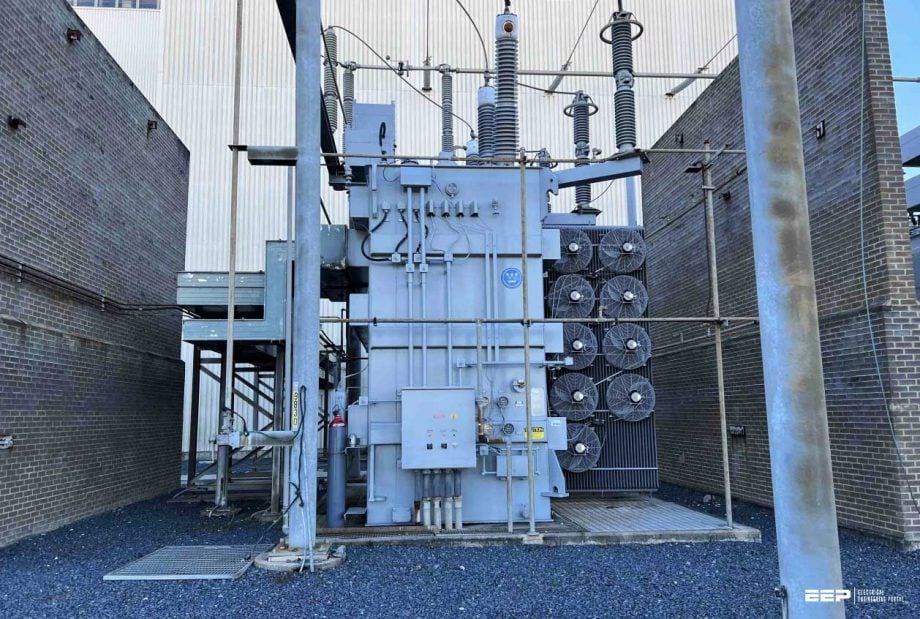
Fire prevention methods in air-insulated high-voltage substations are determined by the utility’s philosophy and requirements. For many utilities, the major method for mitigating the danger of fire-related collateral damage is to construct enough separation clearance distances between plant equipment and structures.
Due to the fact that each country or power utility has its own philosophy in this sector, it is difficult to summarize a worldwide philosophy.
Other goals include protecting the environment, minimizing the risk of injury to operators and members of the public, and protecting the environment.
While selecting a fire protection system, a designer must to take into account the low likelihood of an actual fire occurring, the expense of the fire protection system, and the dependability of the fire protection apparatus. These three things need to be taken into mind.
Figure XX – Fire hazard in air-insulated substation (AIS)
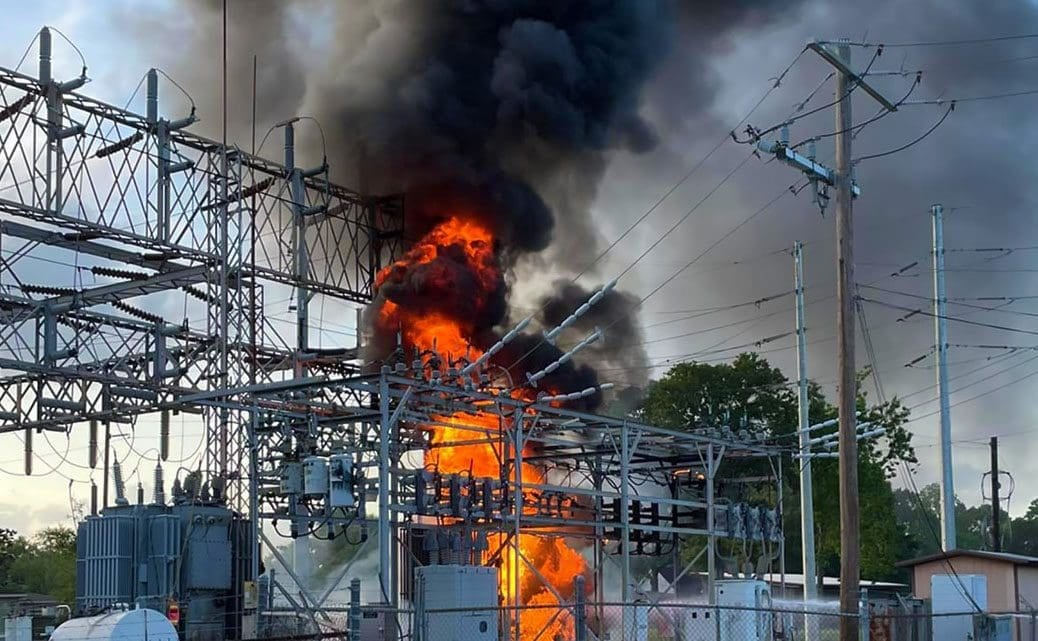

The criticality of the installations or of any other facilities that are near to them determines the level of protection that must be provided.
To safeguard power transformers and the surrounding apparatus, equipment, and buildings at substations from fire, the vast majority of utilities employ fire prevention systems in outdoor and/or interior installations. Air pollution is another concern, as is protecting the environment (trees, buildings, etc.) and keeping employees safe.
In the following paragraphs, we’ll go over some of the testing, maintenance, training, and fire events that have occurred in substations, as well as the many fire protection systems and their unique situations of application for power transformers, cables, control, relay, and cable & signaling rooms.
- AIS Fire Protection Systems
- Protection of Power Transformers
- Protection of Power and Control & Signaling Cables
- Protection of Control, Relay, and Cable Rooms
- Substation No-Fire-Protection Systems
- Problems With Traditional Fire Extinguishing Technologies
- Important Conclusions
1. AIS Fire Protection Systems
When it comes to exterior installations, a water-spray protection system is almost always recommended (see Figure 1). Indoor substations typically feature gas installations of some kind. These systems ought to make use of clean gaseous agents that are both electrically nonconducting and gaseous, and which, upon evaporation, do not leave behind any residue.
Nitrogen and carbon dioxide systems are available.
As a result of their contribution to greenhouse gas emissions, halon systems are no longer in use. Recent articles have reported the advent of hypoxic fire protection systems, in which the level of oxygen in a substation building is controlled to a lower level such that it will not sustain fire. This ensures that the building will not catch on fire.
Figure 1 – High-velocity water spray system installed around transformer
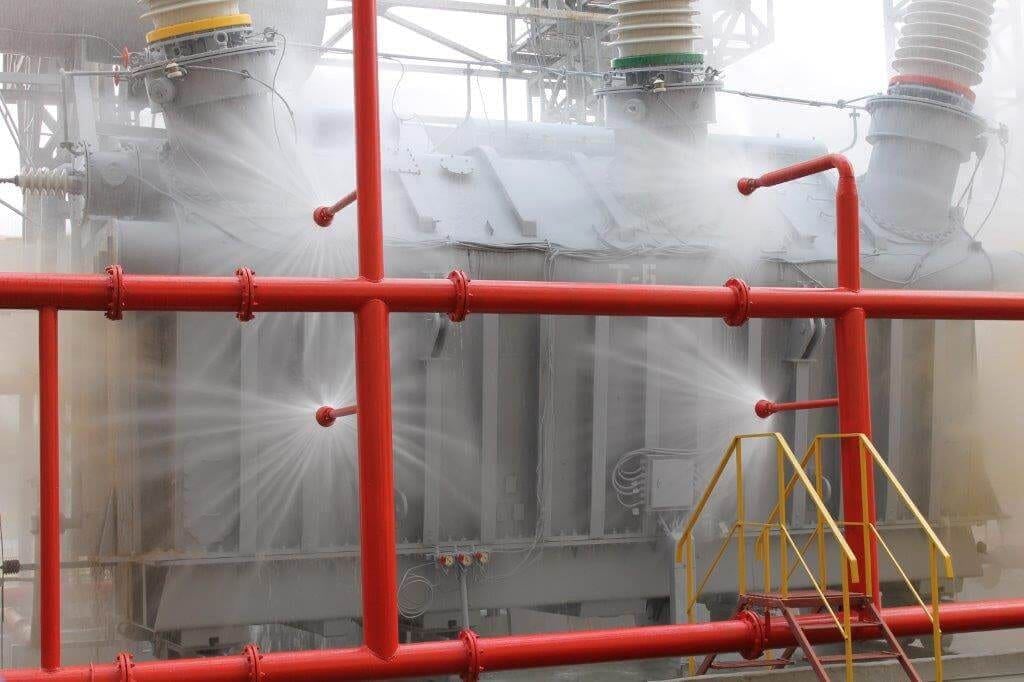

There are also installations that utilize high-expansion foam and powder.
When selecting a method of fire protection for a specific substation, factors such as the substation’s criticality, the likelihood of a fire breaking out, the effectiveness of the extinguishing agent, the potential for damage to neighboring equipment, and the protection of personnel are taken into consideration.
Figure 2 illustrates one such using nitrogen.
Typically, a procedure will take between 5 and 10 minutes to complete. One will rely on either a pressurized gas tank, a locally-stored water supply, or a pump-equipped storage tank. Depending on the substation’s location, several utilities also draw water from nearby rivers and canals.
Figure 2 – Substation Transformer Nitrogen Injection Fire Prevention System
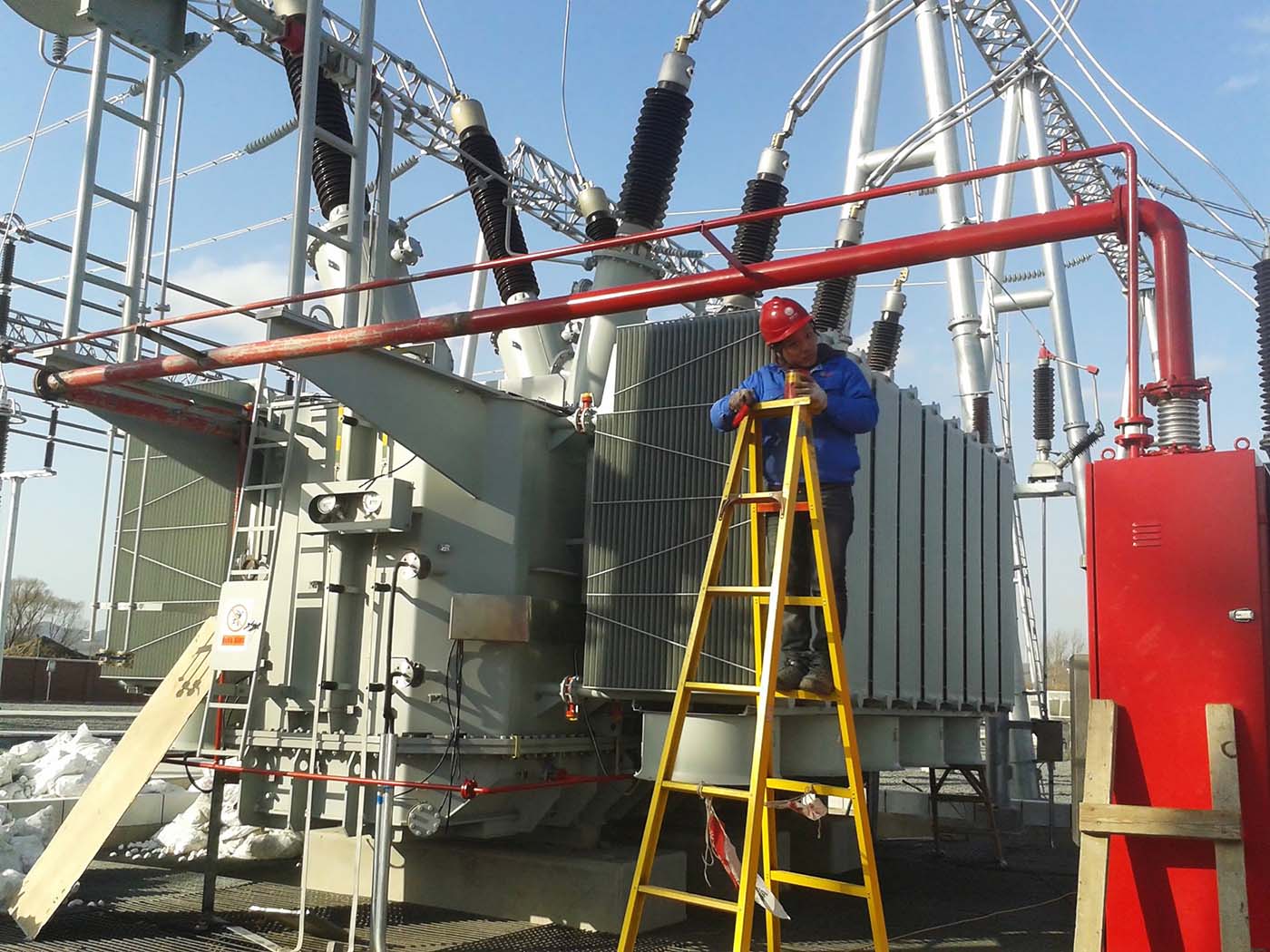

Keeping a water supply on hand for use in extinguishing fires is not standard practice. The amount of water utilized typically ranges from 10 to 25 liters per minute per square meter of transformer surface area (10 to 6000 liters per minute). Usually, the water supply operates between 7 and 10 bar. Nozzles used in outdoor settings are typically not made to withstand the highest possible wind speeds.
The most common specifications for CO2 installations in buildings are 0.5-3 kg CO2 per m3, 0.5-3 minutes of operation, and 50-60 bar of normal operating pressure.
Indoor smoke detectors, as well as bimetal and quartzoid bulb detectors, are common fire detection elements. Several types of detectors, such as optical, pneumatic rate-of-rise, plastic tube, and heat-detecting cable, are found in some circumstances. One detecting device is typically installed per 10-25 m2 of substation.
Figure 3 – Smoke Detection installed in an indoor substation
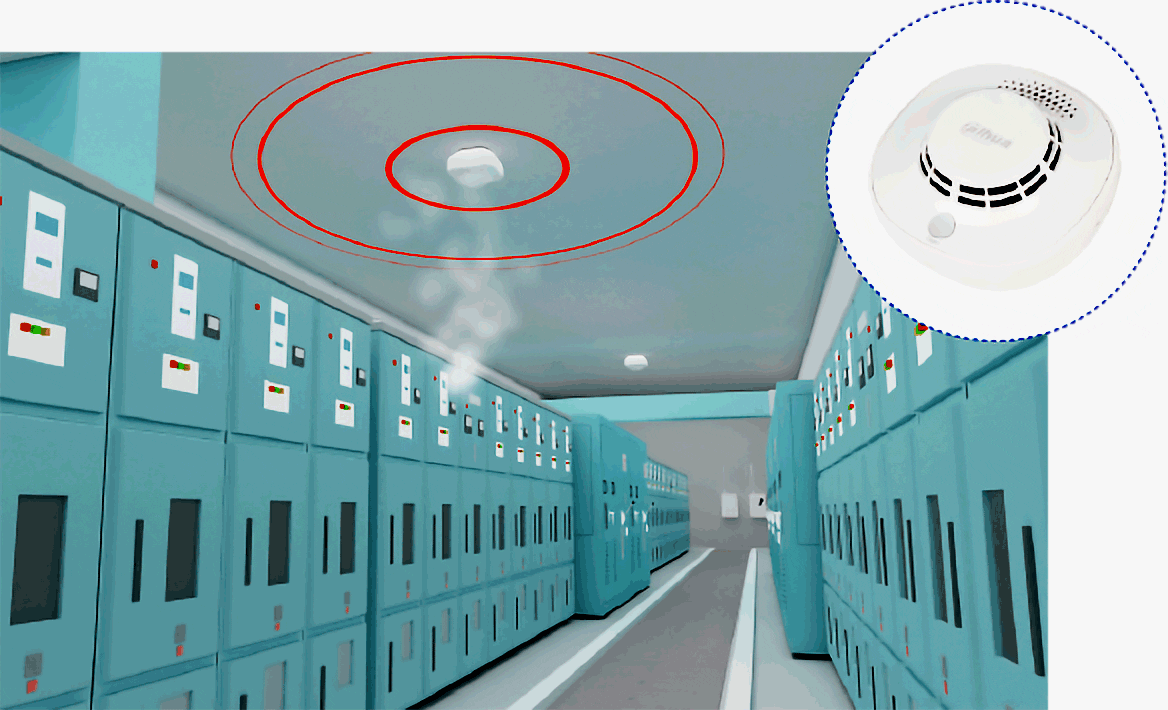

The most desired characteristics are detection dependability, detection speed, resilience to interference, and false alarm prevention.
In the past, the presence of a fire detector was required in order to activate the fire suppression system. Several utilities use safeguarding relays in addition to, or instead of, conventional detection mechanisms (gas, differential, pressure, frame leakage relays, etc.).
Membership Upgrade Required
This content is not available in your premium membership plan. Please upgrade your plan in order to access this content. You can choose an annually based Basic, Pro, or Enterprise membership plan. Subscribe and enjoy studying specialized technical articles, online video courses, electrical engineering guides, and papers.
With EEP’s premium membership, you get additional essence that enhances your knowledge and experience in low- medium- and high-voltage engineering fields.
Black Friday Deal 💥 – Save 20% on Pro Plan with code BLACKFRIDAY
Copyright Notice
This technical article is protected by U.S. and international copyright laws. Reproduction and distribution of PDF version of this technical article to websites such as Linkedin, Scribd, Facebook and others without written permission of the sponsor is illegal and strictly prohibited.© EEP-Electrical Engineering Portal.
Related electrical guides & articles
Premium Membership
Edvard Csanyi
Hi, I'm an electrical engineer, programmer and founder of EEP - Electrical Engineering Portal. I worked twelve years at Schneider Electric in the position of technical support for low- and medium-voltage projects and the design of busbar trunking systems.I'm highly specialized in the design of LV/MV switchgear and low-voltage, high-power busbar trunking (<6300A) in substations, commercial buildings and industry facilities. I'm also a professional in AutoCAD programming.
Profile: Edvard Csanyi

